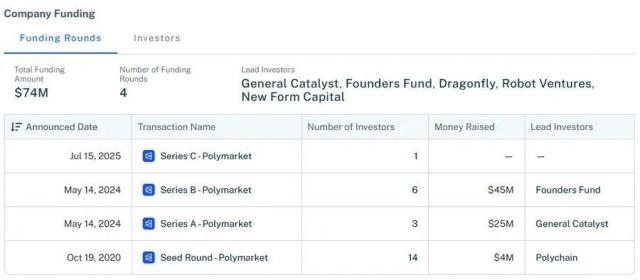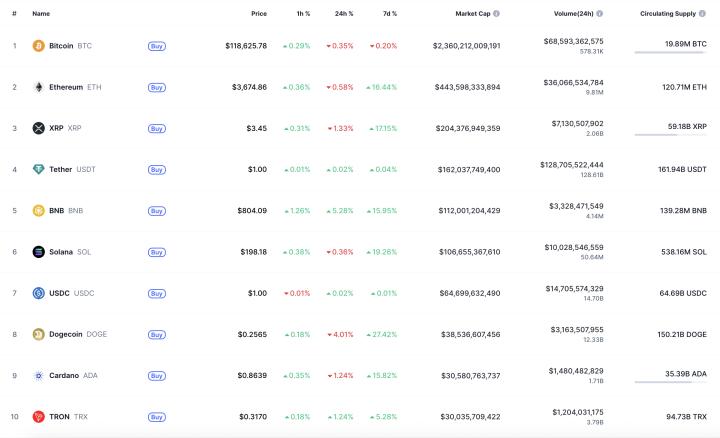Chainfeeds Briefing:
The wave of corporate crypto asset reserves has far exceeded the scope of Bitcoin and Ethereum - many companies are expanding their reserve layouts to include SOL, BNB, XRP, HYPE, and more, seizing the initiative.
Article Source:
https://mp.weixin.qq.com/s/vhzYxkdeZ6tekeO6dVbCTg
Article Author:
IOSG Ventures
Perspective:
IOSG Ventures: With the widespread adoption of the MicroStrategy model, more and more listed companies are incorporating Bitcoin into their strategic asset reserves. However, among these imitators, only a few have truly achieved structural innovation and breakthrough. Metaplanet from Japan is a standout case. The company not only rapidly expanded its Bitcoin holdings to 16,352 coins by 2025 but also constructed a unique "zero-interest rate + Stock Appreciation Rights (SARs)" financing model. Due to Japan's long-term low-interest-rate environment, Metaplanet issued short-term zero-coupon bonds coupled with SARs, avoiding conventional interest expenses while ensuring controlled funding sources. This structure allows the EVO fund to realize returns through stock appreciation rights, with the principal secured by cash. Additionally, the tax environment provides Metaplanet with strategic advantages: Japan imposes a fixed tax rate of about 20% on stock gains, while spot Bitcoin faces a comprehensive tax rate of up to 55%, making Metaplanet an ideal alternative for high-net-worth investors to gain Bitcoin exposure. These factors collectively drove its NAV multiple to as high as 20 times, though also bringing potential hype risks and price volatility. In the US market, several Bitcoin reserve companies with financial engineering capabilities have emerged, such as Twenty One Capital, co-founded by Strike CEO Jack Mallers. The company held 42,000 Bitcoins on its first day of listing through a series of complex transaction structures including SPAC merger, PIPE, and convertible bonds, and by collaborating with Tether, Bitfinex, and SoftBank, it remains the third-largest holder globally. These cases demonstrate that Bitcoin strategy is not just about buying and holding, but reflects a company's comprehensive innovation in financing, taxation, and shareholder structure. Beyond Bitcoin, Ethereum is rapidly becoming a new focus for listed companies' reserve strategies. Since 2025, multiple enterprises have initiated Ethereum reserve plans, creating structural demand for ETH. SharpLink Gaming represents this trend, securing a $425 million PIPE financing (led by ConsenSys and top crypto venture capitals like ParaFi, Pantera, and Electric) and subsequent At-The-Market (ATM) equity mechanisms, successfully accumulating substantial ETH holdings. More critically, SharpLink uses almost all its ETH for staking to generate stable returns, with an over-the-counter transaction with the Ethereum Foundation being an industry first. Additionally, BTCS combined on-chain decentralized finance mechanisms with traditional financing paths, using ETH as collateral on Aave lending platform to obtain USDT, then using it to purchase more ETH and stake in its NodeOps validator network. Companies like BitMine, Bit Digital, and GameSquare have quickly followed suit, raising funds in public markets and rapidly purchasing ETH for staking operations. These companies share characteristics of highly concentrated staking deployment, transparent reserve disclosure, and long-term confidence in Ethereum's ecosystem expansion, security, and economic model. Although some companies are still in early stages with ETH holdings smaller than the foundation or major miners, their financing strategies and on-chain integration capabilities have positioned them at the forefront of ETH reserve tracks. With ETH ETF introduction and staking restrictions still in place, directly holding and staking ETH has become an important path for listed companies to obtain ETH returns, also bringing structural buying to the secondary market. While the corporate crypto asset reserve trend is still emerging and has expanded from Bitcoin and Ethereum to assets like SOL, BNB, and XRP, the industry still faces several structural challenges and risks. First, many new entrants have highly homogeneous strategies, lacking differentiated advantages in financing structures, tax arrangements, and ecosystem integration, causing their stock price premiums (NAV multiples) to be easily driven by market sentiment and difficult to maintain long-term competitiveness. Second, as many companies have not established robust profit models, their market value fluctuations are often announcement-driven, and investors typically lack sufficient transparent information to assess project real value. Especially in bear market environments, market can quickly erase any premiums from crypto holdings. For public investors, identifying companies with strategic moats is crucial. For instance, Metaplanet leverages Japanese tax and financial structures to create arbitrage paths, Twenty One established deep equity collaborations with SoftBank, Tether, and Bitfinex, while SharpLink and BTCS demonstrate differentiated capabilities in staking returns and on-chain integration. Simultaneously, institutional funds are entering this field through funds, with crypto funds systematically allocating crypto reserve stocks and inviting experienced industry advisors to participate in strategic planning. In the future, the market will enter a more differentiated stage, where only companies with comprehensive competitive advantages can form a virtuous cycle between NAV premium, capital market acceptance, and strategic execution. Investors must also be wary of bubble risks behind high multiple valuations, focusing on holding structures, financing paths, transparency levels, and ecosystem integration capabilities to avoid falling into the trap of pseudo-strategic innovation.
Content Source







